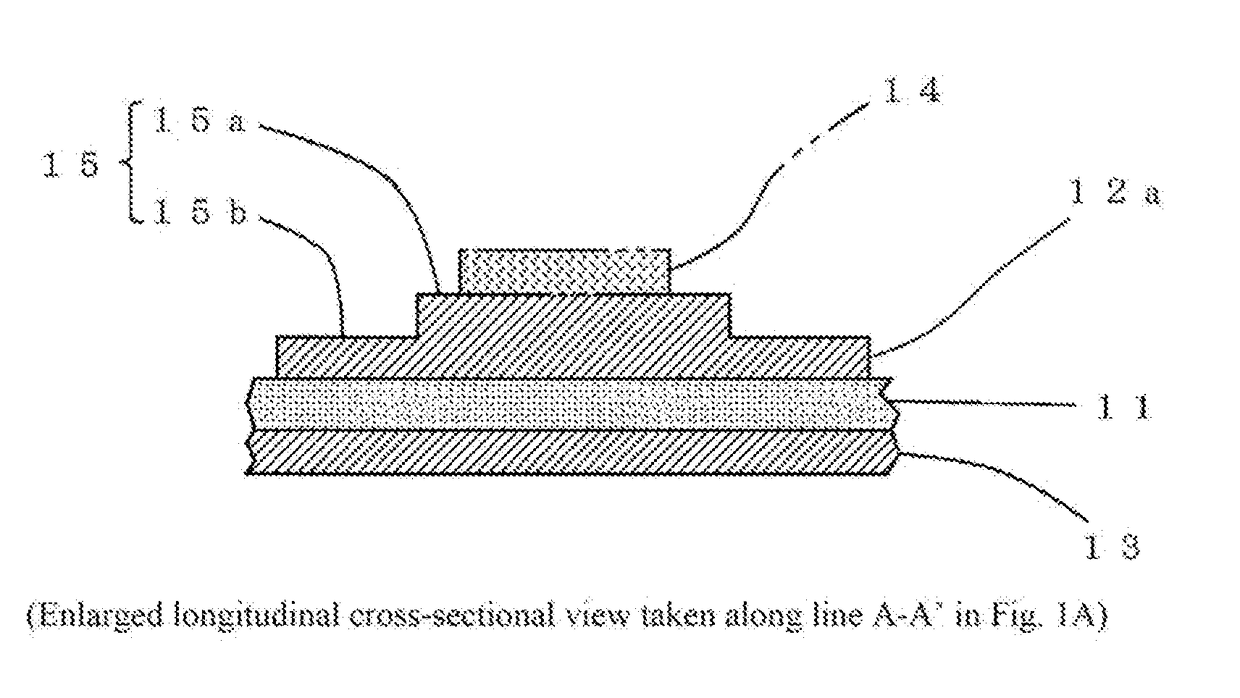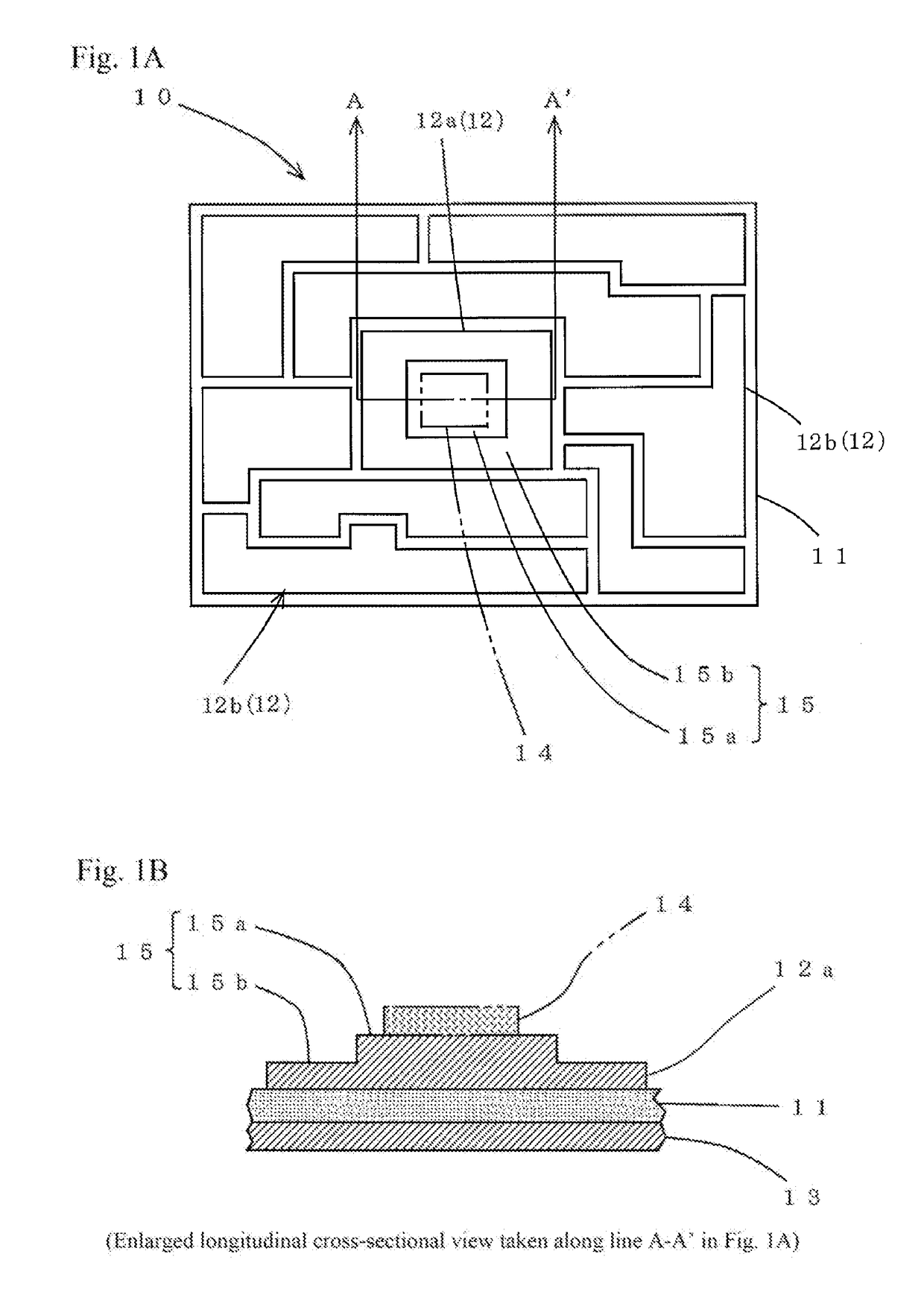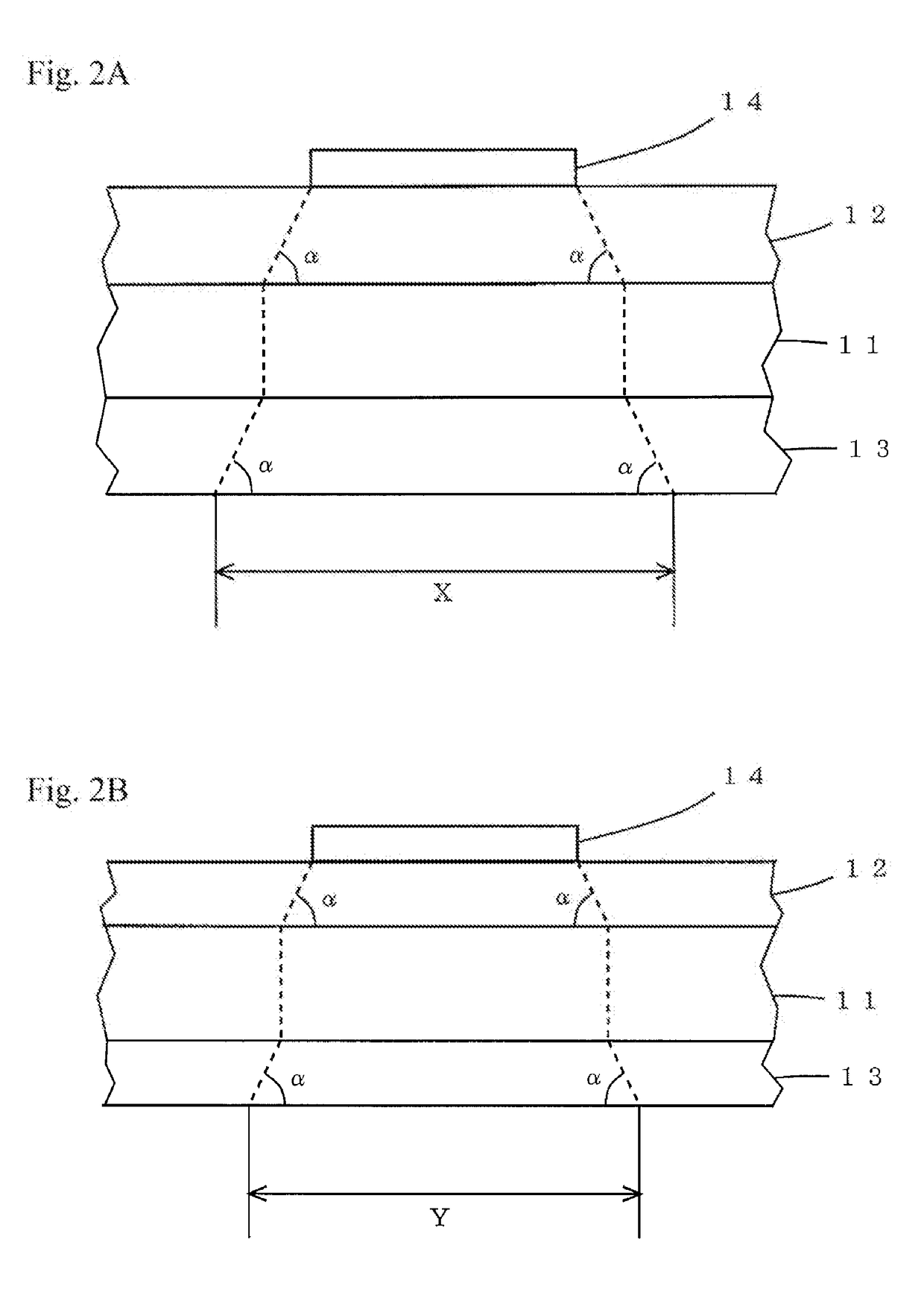Substrate for power module, collective substrate for power modules, and method for manufacturing substrate for power module
a technology for power modules and substrates, applied in the direction of ceramic layered products, chemistry apparatus and processes, other domestic articles, etc., can solve the problems of reducing the productivity of final products, generating more heat, and consuming more power of recent power semiconductor devices, so as to reduce the cost of ceramic plates formed from aluminum nitride, the effect of efficient mounting
- Summary
- Abstract
- Description
- Claims
- Application Information
AI Technical Summary
Benefits of technology
Problems solved by technology
Method used
Image
Examples
Embodiment Construction
[0040]A substrate for a power module according to one embodiment of the present invention will now be described with reference to FIGS. 1A and 1B.
[0041]As shown in FIGS. 1A and 1B, a substrate 10 for a power module according to the present embodiment includes a ceramic plate 11, and an island-shaped copper circuit plate 12, which is joined to one main surface of the ceramic plate 11. The entire copper circuit plate 12 forms an electric circuit. The power module substrate 10 further includes a heat dissipation copper plate 13, which is joined to the other main surface of the ceramic plate 11 to cover the entire surface of the other main surface (where the term entire includes substantially entire). The heat dissipation copper plate 13 dissipates heat generated from an electronic component (e.g., a semiconductor device 14) mounted on the copper circuit plate 12 downward (toward the other main surface).
[0042]The copper circuit plate 12 includes a first copper circuit plate 12a for moun...
PUM
| Property | Measurement | Unit |
|---|---|---|
| temperature | aaaaa | aaaaa |
| temperature | aaaaa | aaaaa |
| thickness | aaaaa | aaaaa |
Abstract
Description
Claims
Application Information
 Login to View More
Login to View More - R&D
- Intellectual Property
- Life Sciences
- Materials
- Tech Scout
- Unparalleled Data Quality
- Higher Quality Content
- 60% Fewer Hallucinations
Browse by: Latest US Patents, China's latest patents, Technical Efficacy Thesaurus, Application Domain, Technology Topic, Popular Technical Reports.
© 2025 PatSnap. All rights reserved.Legal|Privacy policy|Modern Slavery Act Transparency Statement|Sitemap|About US| Contact US: help@patsnap.com



